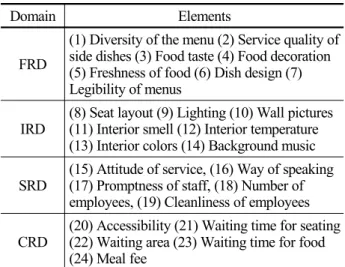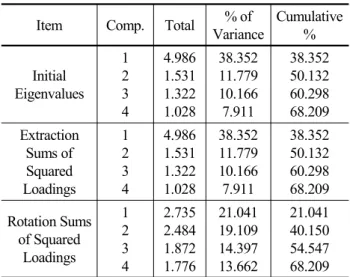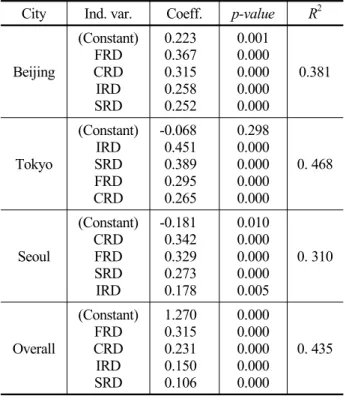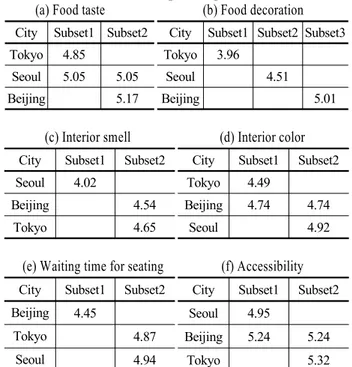Cross-Cultural Comparisons of Customer Perception at Restaurant Franchises in Beijing, Tokyo, and Seoul
전체 글
수치




관련 문서
This study aims to investigate the students' motivation and satisfaction on college English course by English majors and non-majors. Three research questions
Secondly, the important factors to attract T/S cargo at Kwangyang Port are geographical location, promotion activity to introduce Port and expansion of
The effects of economic and cultural factors, state autonomy, institutional level, and policy network are crucial in accounting for the developmental pathway influencing
In conclusion, this study examines the impact of the security quality level of Busan port on port service quality, customer satisfaction, and customer loyalty, and
The purpose of this study is to identify how the Customer Satisfaction (CS) policy affects the employees'level of stress and satisfaction, and to minimize the
The purpose of this study is to analyze the effects of service quality on customer satisfaction and revisit intention perceived by Chinese golf range
Objective: The purpose of this study is to investigate the relationship between employee satisfaction and patient safety and quality improvement after compulsory certification
The purpose of this study is to determine customer satisfaction and repurchase intentions based on various characteristics when Korean Chinese consumers actually